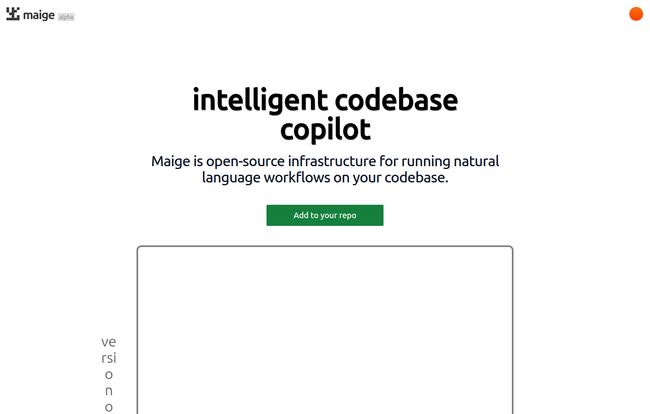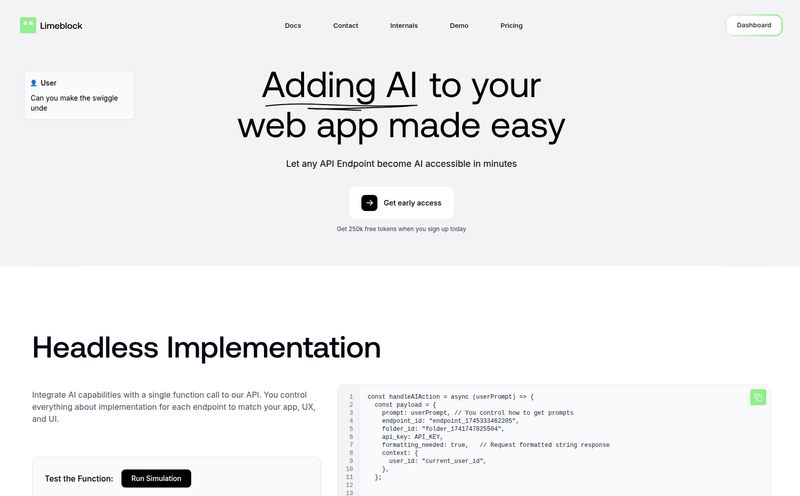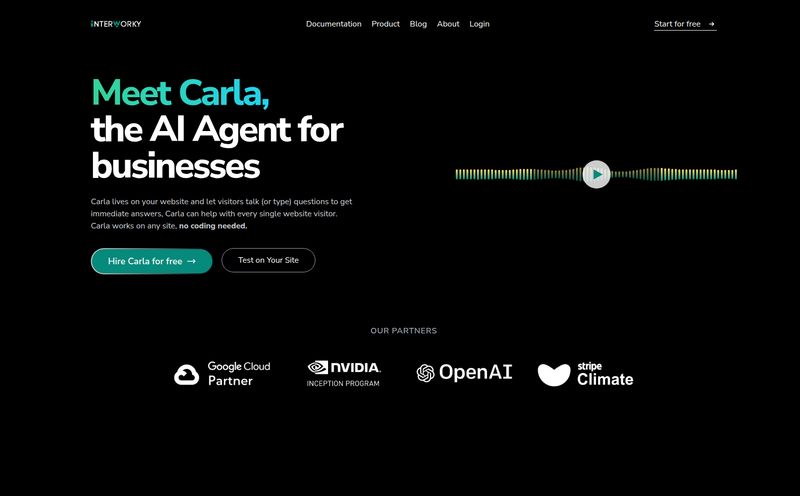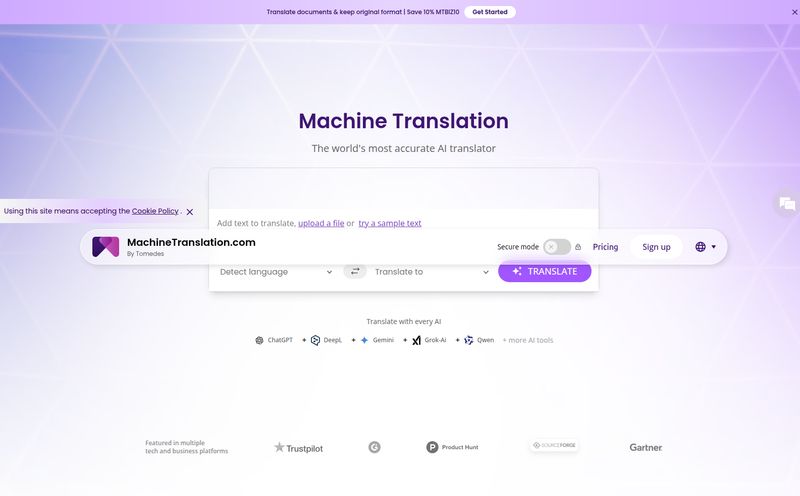If you've ever maintained a project on GitHub, especially an open-source one, you know the grind. The endless stream of new issues, the triage, the labeling, the nagging feeling that you're spending more time on admin than on actual, you know, coding. I've been there. My personal projects sometimes look like a digital ghost town of stale PRs and untriaged issues. It’s a chore.
So, whenever a new tool pops up promising to automate the pain away, my skepticism alarm goes off. I’ve seen a lot of them. Most are just glorified `if-then` statements wrapped in a slick UI. But then I stumbled across Maige. And I have to admit, this one feels… different.
I first heard about Maige when it was a simple little thing, pitched as an AI that just labels new issues. Cool, but not exactly a game-changer. But it seems Maige has been hitting the gym. It's grown from a niche utility into what it calls an "intelligent codebase copilot." A bold claim. Let's see if it holds up.
So, What Exactly is Maige? (And What It's Not)
At its heart, Maige is a workflow engine that you can command with natural language. It connects to your GitHub repository and, according to them, does something pretty clever: it vectorizes your entire codebase, documentation and all. Now, that might sound like tech-jargon soup, but think of it this way: it doesn't just read your code, it develops an understanding of it. It learns your project's context, your rules, your architecture. This is a far cry from a simple script that just looks for the word "bug" in an issue title.
It's less of a robot butler blindly following orders and more like a seasoned junior dev who’s actually read all your documentation before asking a question. It knows what a `UI-related` issue looks like in your repo, not just in general.
Getting Started is Deceptively Simple
For a tool that claims to do so much, the setup is almost laughably easy. They boil it down to three steps:
- Connect your repo. This is the magic step where Maige does its deep dive, creating embeddings and setting up a sandbox environment.
- Write your rules. This isn't about writing complex YAML files. You literally write rules in plain English, like you're talking to a person.
- Watch it run. The AI takes over, and you start seeing it comment, label, and assign things automatically.
The whole process seems designed to remove friction, which is something I can definitely get behind. Too many dev tools require you to learn a whole new configuration language just to get started.

Visit Maige
Beyond Labels: The Real Power of Maige's Workflows
Okay, so automatic issue labeling is the gateway drug. It saves you maybe an hour a month, as their old marketing claimed. Nice. But the real power, the thing that made me sit up and pay attention, is the custom workflow engine.
Custom Rules in Plain English
This is the killer feature for me. You can give Maige instructions that are specific and nuanced, right in a comment or a config file. For instance, you can tell it things like:
+ maige assign UI-related issues to @some-designer
Or something even more complex:
+ maige label-env PRs as 'needs-approval' unless opened by @maintainer
Think about the mental overhead that saves. You're not just automating tasks; you're codifying your team's internal processes in a way that's both machine-readable and human-legible. That’s pretty powerful stuff.
A Code Sandbox and Generation? Now We're Talking.
This is where Maige really flexes. The feature list mentions a code sandbox and code generation. This elevates it from a project management assistant to an active development partner. It can spin up an environment to test a change, review a PR against your contribution guidelines (`CONTRIBUTING.md`), or even generate boilerplate code. It's a huge leap from just slapping a label on an issue. I'm both incredibly excited and a little bit nervous about the potential here. An AI that can not only triage but also contribute... the future is weird, isn't it?
Who is This Tool Actually For?
Seeing that it's used by projects like Nuxt and Cal.com gives you a pretty good clue. This isn't for the solo dev working on a tiny private project—that might be like bringing a bazooka to a knife fight. But if you are:
- An open-source maintainer drowning in community contributions.
- A dev team at a startup trying to stay lean and efficient.
- A larger organization looking to standardize workflows across multiple repos.
...then the value proposition becomes very, very clear. It’s for anyone whose time is better spent on complex problem-solving than on repetitive repo management.
Let's Talk Turkey: The Pricing
Maige offers a "free to try" model, which is always welcome. After that, it's a pretty straightforward pricing plan.
| Plan | Price | Key Features |
|---|---|---|
| Standard Plan | $40.00 / month | Auto-labeling, Auto-assignment, Custom workflows, Code sandbox, Code generation |
| Enterprise | Custom Pricing | For larger teams with specific needs |
So, is $40 a month worth it? In my opinion, easily. If you’re a developer whose time is billed out at, say, $100/hour, Maige only needs to save you about 25 minutes of work per month to pay for itself. Given its capabilities to automate triage, assignments, and reviews, I'd bet it clears that bar without breaking a sweat.
The Good, The Bad, and The AI
No tool is perfect, right? From my analysis, Maige has a ton going for it. The plain-English commands, the deep codebase context, and teh ability to go far beyond simple labeling are huge wins. The social proof from major open-source projects is also a massive green flag.
But there are considerations. The old saying "garbage in, garbage out" absolutely applies here. Maige's effectiveness is going to be directly proportional to the quality of your repository's data. If your documentation is a mess and your contribution guidelines are nonexistent, the AI is going to struggle to enforce rules based on them. This isn't so much a 'con' as it is a prerequisite for success. Using a tool like this might actually be the catalyst you need to finally clean up your docs. A blessing in disguise, perhaps?
Ultimately, Maige represents a fascinating evolution in dev tools. It's a step away from rigid, pre-programmed bots and a step toward flexible, context-aware AI partners. It's not here to replace developers, but to take the annoying, repetitive parts of our jobs off our plates so we can focus on what matters. And I, for one, am here for it.
Frequently Asked Questions
- Is Maige just for labeling GitHub issues?
- Not anymore! While that was its original function, it has evolved into a full codebase copilot. It can auto-assign PRs, run custom workflows based on plain-English rules, use a code sandbox, and even generate code.
- Is Maige difficult to set up?
- No, the setup process is designed to be very straightforward. It involves connecting your repository, writing your rules in simple text, and letting the AI take over. No complex configuration files are needed to get started.
- How much does Maige cost?
- Maige has a free trial period. After that, the Standard Plan is $40 per month, which includes all the main features. There is also a custom Enterprise plan for larger organizations.
- Can Maige actually write code for my project?
- Yes, one of its listed features is code generation. This allows it to help with things like boilerplate code or suggesting fixes, making it an active participant in the development process.
- What kind of repositories benefit most from Maige?
- Projects with a high volume of activity, such as popular open-source repositories or projects with large development teams, will see the most immediate benefit. It helps manage the complexity and administrative overhead of a busy repo.
- How does Maige interact with my code? Is it secure?
- Maige works flexibly with the GitHub API, meaning it operates within the permissions and security framework you grant it via GitHub. It's an authorized app, not some random script scraping your code.



